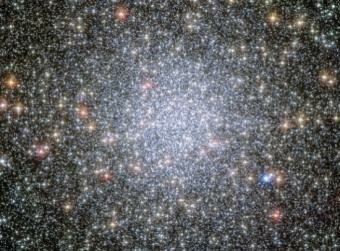This year’s first operational dive of Okeanos Explorer has come across the discovery of a new octopod. This is what the National Oceanic and...

A new research has been undertaken by Rosanne Di Stefano of the Harvard-Smithsonian Center for Astrophysics to understand the existence of alien life on globular star clusters. These are heavily packed groups of millions of stars that are located only 100 light years away from Earth. The study argues that these clusters are likely to provide sustainable environment for the evolution of advanced interstellar life. The research recommends positive outlook owing to the information available regarding the existence of other planets outside our solar system.
Di Stefano stated that the foremost evidence of intelligent life in our galaxy is likely to be found in a globular cluster. The clusters have found to be around 10 billion years old. Though their age is a controversial subject, it also proves that if any civilizations were established, they had enough time for evolution and advancement.
However, some scientists are of the view that the globular cluster stars don’t contain the heavy elements that are required for the formation of planets. Thus, the possibility of existence of alternate world in these clusters is very dim. Di Stefano and her colleague Alak Ray from Tata Institute of Fundamental Research in India produce a counter argument that it has been discovered that stars surround non-cluster stars, which don’t have these elements in significant quantities. Moreover, smaller planets like Earth are possible to be found around these stars.
The existence of stars in too much proximity can cause instability in planets but also raise the possibility of space-travelling. Despite stars in the clusters being 20 times near as compared to the nearest stars of sun, it can be considered as an opportunity for possible exploration, settlement and communication. “We call it the 'globular cluster opportunity. Sending a broadcast between the stars wouldn't take any longer than a letter from the U.S. to Europe in the 18th century”, said Di Stefano.










